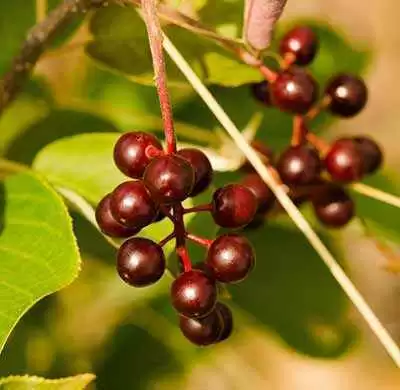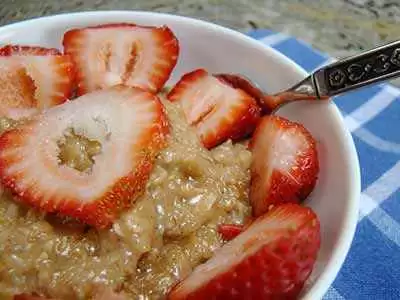
Celiac.com 11/24/2015 - Polyphenols are a group of compounds produced by plants, highly variable in strucure, physical, chemical and biological properties. Currently science knows of several thousand natural phenolic compounds. A common feature of polyphenols is their ability to enable redox reactions. With their ability to transport protons and electrons, phenolic compounds not only readily get oxidized, but also, through the compounds called quinones that result from their oxidation, may mediate oxidation of other compounds that do not directly react with oxygen.
Anthocyanins
Anthocyanins are a large group of plant dyes that are soluble in water and are found in flowers, fruits, leaves and stems. In the cell they are located in the vacuoles, in the form of granules of various sizes, however, the cell walls of the pulp and tissues do not contain anthocyanins. Anthocyanins give fruits and vegetables different colors like orange, red, pink, purple and dark blue.
Celiac.com Sponsor (A12):
Anthocyanins belong to the polyphenol organic compounds. The name “anthocyanin” was first used in 1835 by Marquart to refer to the blue dye of the cornflower. The structure of anthocyanins can be very complex and diverse. Acid hydrolysis of anthocyanins leads to decay into sugars and anthocyanidins, called aglycones. The anthocyanins are natural products usually in the form of mono-, di- or tri-glycosides.
Hundreds of natural anthocyanins are known, and over 100 could be produced synthetically. These dyes can be extracted from plants and are used as food additives to impart or reinforce the color of drinks, juices, candies and jellies.
Anthocyanins determine the hue and color stability, for example, in strawberries the dominant dye is pelargonidin 3-glucoside. Anthocyanin synthesis is a photochemical process because the fruit which is directly irradiated by solar radiation has a more full coloration compared to fruit picked early and ripened in storage.
Health Aspects
The healing properties of anthocyanins have long been known in folk medicine, and now they are increasingly being used in the pharmaceutical and cosmetic industries. Anthocyanin’s name was derived from the Latin name of the plant from which the particular compound was extracted: cyanine flowers or cornflower (Centaurea cyanus L.). Anthocyanins are unstable compounds and reside in an aqueous environment and depend on pH levels that trigger changes in the color of products from which they were isolated. In acidic conditions they have a red color, in nutral conditions violet, and in alkaline they are blue.
The structure of anthocyanin molecules has a significant impact on the hue, intensity and color stability. Irreversible changes of anthocyanin pigments are mainly due to oxidative polymerization processes and cause changes in natural red color of fruits to red-brown which is characteristic of long storage. The rate of these changes depends mainly on the presence of factors in the raw material, temperature and time.
Chokeberry - Aronia
The addition of these compounds to food does not raise concerns of consumers, and they are accepted. An example of a source of anthocyanins is the chokeberry, which contains a lot of polyphenol (above 20 mg/g), including anthocyanins. With a considerable amount of polyphenols, the chokeberry has a significant level of antioxidant activity. Its distinctive tart flavor comes from the high content of tannins which reduces the possibility of direct consumption of the fruit and its products. Generally it is used in combination with other fruits, or in a diluted form.
Chokeberry fruit is used for the manufacture of nectars, drinks, wines, jams, as well as food dyes and bioactive compounds. Anthocyanins isolated from chokeberry have antimutagenic and anticarcinogenic activity, and chokeberry juice has antioxidant properties. Chokeberry juice is more and more relevant in the food industry as a source of natural red color for products that are poor in stable color.
Products made from chokeberries are mainly aronia juice that is mixed with other fruit juices. Other applications include food coloring additives teas and syrups. In Russia, aronia and apple juices are combined and fermented to produce red wine. In Lithuania, dessert wines are produced with the use of chokeberry or chokeberry juice, which is mixed with other fruit juices. Commercial juices are produced by pressing ripe berries, then fining and filtering the juice. To reduce the tannin content gelatin may be added prior to filtration.
Tannins sometimes form complexes, which cause clouding of clear juice. Reducing the level of tannins also makes juice have a less tart taste. Clear juice can then be bottled and pasteurized or concentrated and used as a food ingredient. The whole fruit can be used for the production of a puree that is a highly colored product of uniform consistency once the seeds and skins are removed. The product can be frozen and used as a food ingredient in sauces.
Antioxidant Effect
In the scientific literature, we can find a number of studies on the antioxidant properties of chokeberry, chokeberry extracts or phenolic components. Fresh chokeberry fruits have the highest antioxidant capacity of the fruit measured by ORAC method. Literature reports that chokeberry juice has the highest antioxidant capacity of beverages rich in polyphenols—four times higher than other berry juice, cranberry juice, or red wine. Anthocyanidins and procyanidins containing o-dihydroxyphenyl group are excellent metal chelators and form complexes with, for example iron (III) and copper (II). The presence of free iron and copper in biological systems catalyzed free radical reactions, such as the Fenton reaction. The ability of the phenolic components to bind divalent metal effectively reduces the concentration of these cations, and therefore their oxidative properties.
It should be noted that the in vitro data does not say a lot about the role they can play in in vivo systems for prevention of oxidative stress. The literature also describes the antioxidant effects in animals, where chokeberry anthocyanins reduce lipid peroxidation and increase the activity of enzymes that are involved in the antioxidant defense system. It was also observed that the fraction of the red dye from chokeberry, both in vitro and in vivo. is able to prevent damage to the gastric mucosa. Antioxidant effects observed in humans, with chokeberry juice supplementation reduces oxidative damage to red blood cells produced during exercise.












Recommended Comments
There are no comments to display.